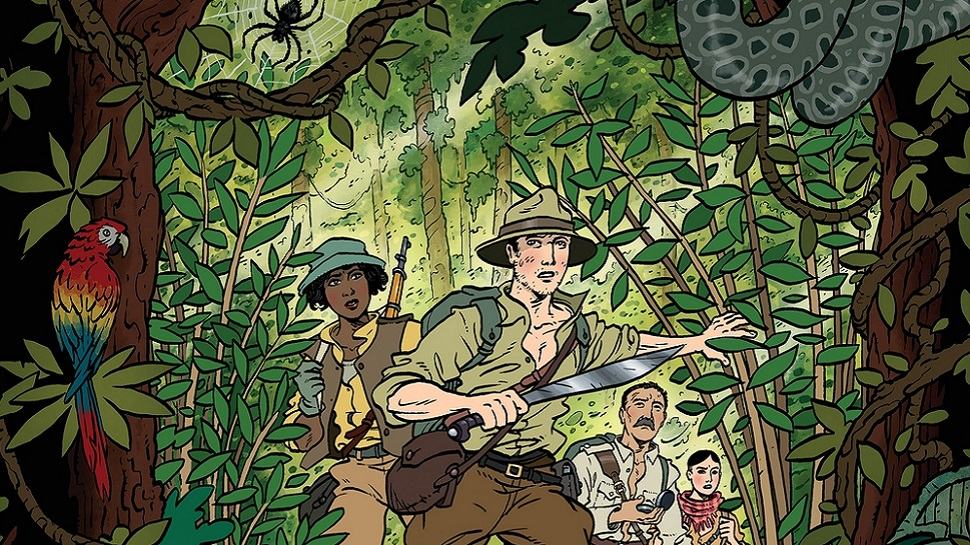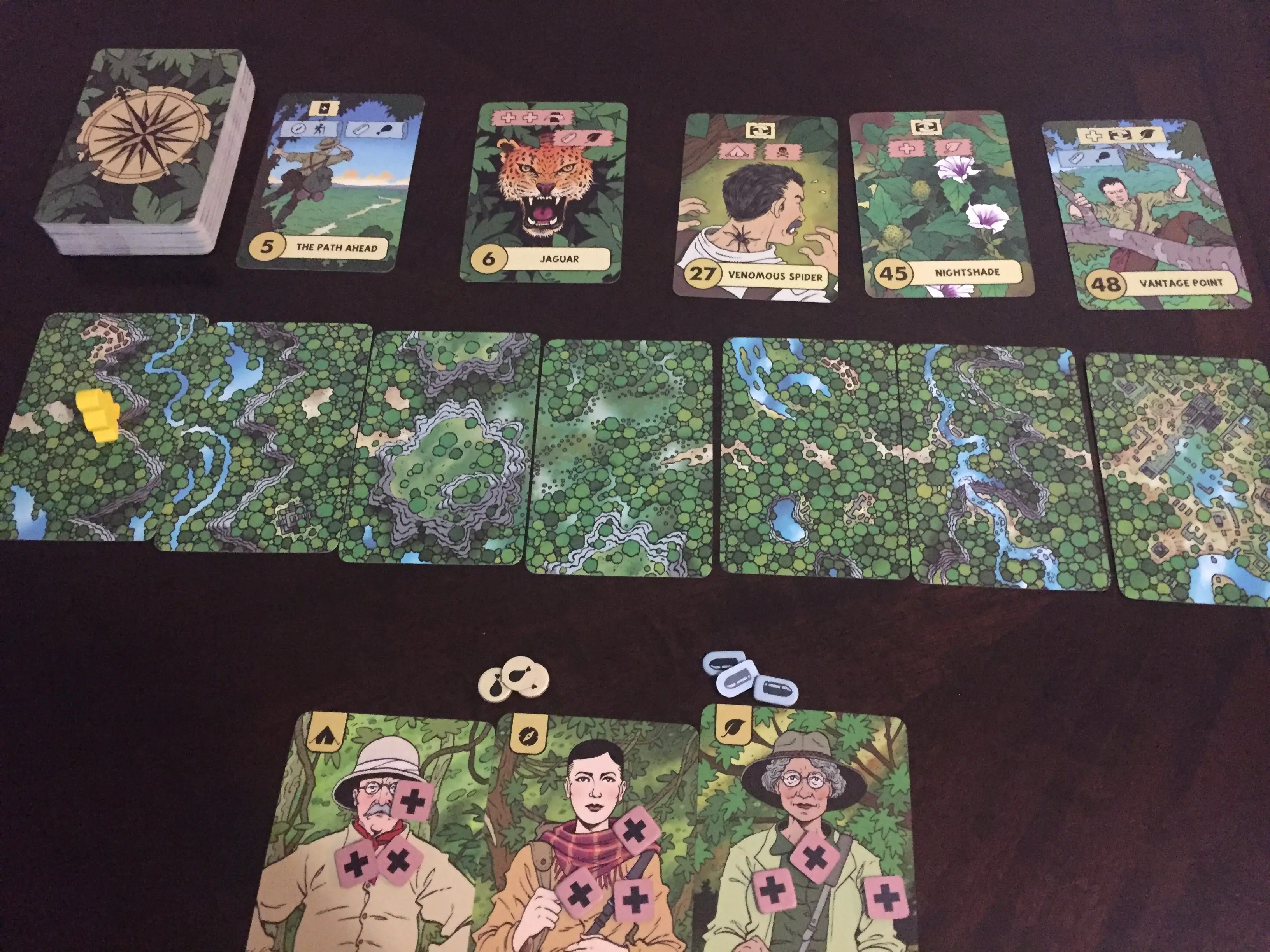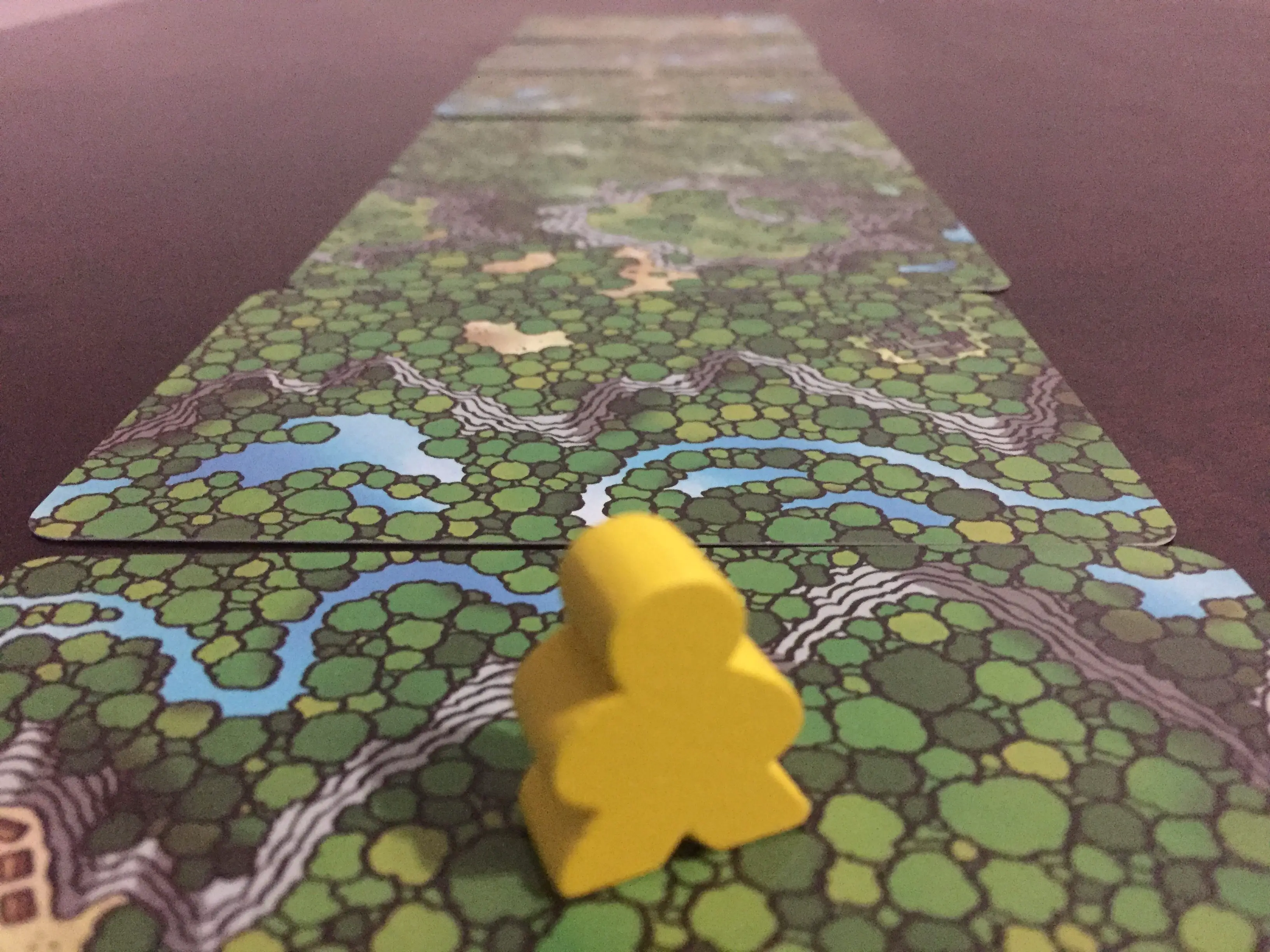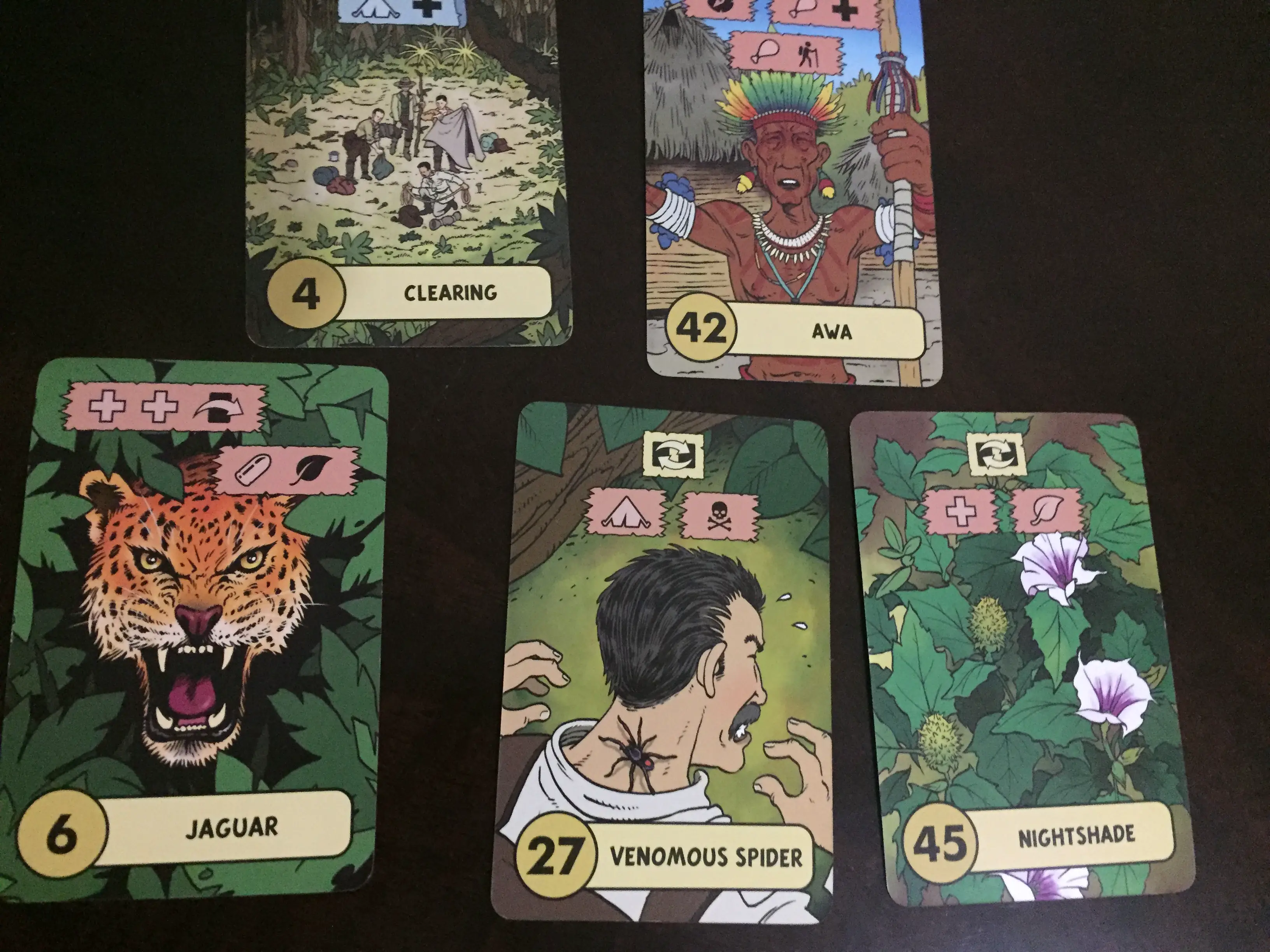The Lost Expedition was designed by Peer Sylvester and published by Osprey Games in 2017.
In 1925, explorer and land surveyer Percy Fawcett staged his final foray into the Amazon in search of El Dorado, or the lost city of Z. Stories of his journey and disappearance captivated the English speaking world in the 1930s. The story once again came into prominence in 2009 after the publication of The Lost City of Z by David Grann, which then inspired a movie of the same name in 2017. Were the mostly friendly presentations of Percy Fawcett in the book and the movie accurate, or was he merely a bumbling, racist idiot who discovered nothing?
Luckily, such questions need not bother us board gamers. Instead, in The Lost Expedition, we can attempt to pick up where good ole’ Percy left off and actually find El Dorado! Better yet, we can do so in 20-30 minutes in the comfort of our own homes.
How to Play The Lost Expedition
You can play this game as a cooperative, a solo, or a team vs. team game. In every mode of the game, you begin the game by selecting three archaeologists who you attempt to guide into the heart of the Amazon. They don’t do much besides lend their expertise (represented by a symbol on their cards) during your trek. The voyage occurs on a row of cards that come together to form a jungle panorama.
During your turn, you will select one card from your hand to play into a tableau at the center of the table. Each card represents individual encounters along the way, including snake bites, wild monkeys, spoiled supplies, and other horrible things. Occasionally, you will also find the occasional abandoned camp or other boon (don’t count on too many of those). You will also run into various Native American tribes of the Amazon, such as the Xinguano, Kalapalos, or Hi’Ato’Ihi, which will often give you the chance to exchange some of your resources for another boon.
The encounter cards rely on a system of colors and symbols which represent obstacles, actions, and resources. Yellow banners represent choices that you MUST make, red banners make you chose one from among them, while blue banners are optional choices.
You will spend and receive food, bullets, and other useful items along the way. These are all represented by various symbols on each card, as well as a few tokens. For most of the game, you will make tough decisions about what resources to keep, when to make key sacrifices, etc. Eventually, though, you want to acquire walker symbols. These allow you to progress down the card panorama and (hopefully) to the Lost City!
This game is not your typical, Indiana Jones-esque adventure where excitement abounds around every corner. You don’t win The Lost Expedition; you merely survive it. If you win at all (this game is quite hard), the chances are good that two of your adventuring companions have died, and your remaining companion will limp, sullenly yet triumphantly, towards the finish line.
I will defer to Rodney Smith on his Watch it Played channel for a fuller explanation of gameplay.
What I liked about The Lost Expedition
The Lost Expedition stands in a proud line of short card games designed to kick you butt and leave you with barely a leg to stand on. Some recent examples which I have enjoyed include Friday, the Grizzled, Frost (an excellent iOS game), and especially Space Hulk: Death Angel. The game does a good job of evoking the feeling of “let me choose the least bad option.” I don’t like that feeling in a long game, but it’s fun in small doses.
The designer, Peer Sylvester, said that he put a lot of research into theme integration for the game. If you allow yourself to get into the headspace of the game, you can recreate your journey in your imagination quite easily. When you encountered those piranhas, did you spend the time and carefully throw them food so you could pass, or did you save time by wading through and accepting some wounds? Were you savvy enough to save ammo for the anaconda, or did you have to suffer its attacks? String all of that together, and you might come out with a fun, pulpy short story.
On that note, I appreciated that the designer took the time to research the Amazonian tribes and shate their names, rather than leaving it at “Injuns attack!”
From a graphic design perspective, the symbol system that the game employs takes some getting used to. However, I always appreciate when card games minimize text and let the images do the talking. The symbols clearly state what you need to do, in a way that does not crowd out the amazing art on the cards.
Mechanically, I enjoyed how tight the game was. There’s not a lot of wasted design space; every symbol and action has a direct impact on your decision-making. This greatly cuts down on having to remember non-essential details. You lay down cards, try to match symbols on other cards, and conserve as many resources as you can on the way. That’s it. As a quick, 2o minute, puzzly experience (especially as a solo), this game has a lot to offer.
What I didn’t like about The Lost Expedition
While I mostly enjoyed the theme, I did encounter some rough spots. In what world does shooting a tiger in the face give you a compass? As much as I appreciated how much effort went into theme integration, ultimately the game presents a randomized, round-by-round series of puzzles that need to be solved in ways that leave you enough resources to resolve the next puzzle. Therefore, some thematic sacrifices needed to be made. I’m one of the only people in my playgroup who noticed the wonky parts, though, so maybe it’s just me.

I did not like that the game chose to represent resources using little cardboard bits. I lose those all of the time. Plus, it adds just that little bit of extra setup and cleanup time that might make me hesitate to throw it down for a quick solo play. I would much rather that the publishers found ways to represent resources with other cards, or perhaps clips like the health trackers in Forbidden Desert. A companion app to track all of that stuff would work perfectly.
I can imagine some people might find this game too mechanical, or that it beats you up enough to where choices aren’t very meaningful. If all of your companions are at one health and you run into a card that asks you to sacrifice health or food… that’s not a real choice. This game is so brutal, that kind of choice happens alot. On top of that, it will happen that way pretty much after the first two rounds in most of your games! I personally didn’t mind this so much. I do agree that many choices feel obvious. However, you make decisions like this EVERY turn. I don’t mind if some of the choices are forced, as long as other choices further down the road present interesting options.
The Lost Expedition works best as a solo and as a co-op. The team game seems shoehorned in. In that version, each team lays cards in either of two tracks. Once enough cards have been added, the leader can either pick a path or pass to the other team. It sounds like an interesting choice in theory. However, almost EVERY card is dangerous, so choosing among two different crappy paths doesn’t end up all that interesting.
Final Verdict
I highly recommend The Lost Expedition to anyone who wants a quick survival card game, but who doesn’t want to go through the whole rigmarole of laying out a full game of Space Hulk: Death Angel. It has enough, tightly developed puzzle elements to please those who prefer a good mechanical experience from their games. At the same time, the art and theme integration will appeal to gamers looking for a good story. This game is not for: 1) competitive gamers 2) people who aren’t jazzed about randomized puzzles, or 3) people who just don’t like card randomness in general. If you are not among those gamers, then give this a try!







